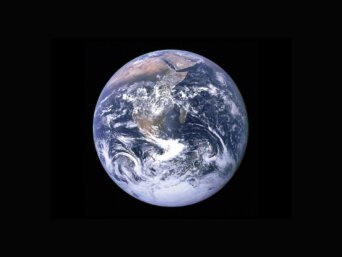- About
- Topics
- Story
- In-Depth
- Picks
- Opinion
- News
- Donate
- Signup for our newsletterOur Editors' Best Picks.Send
Read, Debate: Engage.
| topic: | Climate Change |
|---|---|
| located: | France, Germany, Japan, Spain, Belgium, Switzerland |
| editor: | Abby Klinkenberg |
On 30 March, 2022, the European Commission officially launched its Destination Earth (DestinE) initiative, which it says “could be the key” to solving the climate crisis. Relying on the processing power of Europe’s burgeoning supercomputers, DestinE strives to develop a full “digital twin” of the Earth by 2030.
If the concept conjures an image of the metaverse or “The Matrix,” one would not be far off: a “digital twin,” coined by Professor Michael Grieves in 2002, virtually renders a physical object. The European Commission is hoping that their cutting-edge, and frankly unprecedented, digital replica of our planet will allow for the better monitoring, modelling, and predicting of natural disasters and climate change. It’s supremely ambitious - and it just might work.
Supported by €150 million in initial funding provided by the Digital Europe Programme through mid-2024, Destination Earth is now in the process of being jointly developed by the European Commission and the European Space Agency (ESA), the European Centre for Medium-Range Weather Forecasts (ECMWF), and the European Organisation for the Exploitation of Meteorological Satellites (EUMETSAT). By the end of 2024, it aims to have completed three components of the project: a core service platform; a data lake that consolidates various EU, national and independent data sources; and the first two digital twins on climate change adaptation and weather-induced and geophysical hazards.
More and more digital twins will be modelled according to different analytical dimensions (like urban digital cities or food systems) until they are ready to be integrated into a “‘full’ digital replica” in 2030. The initial digital twins and the ultimate digital twin have been conceived in order to support policy-makers to monitor the planet’s health, anticipate natural and climatic disasters, and develop effective policies towards sustainability. Not only will the model rely on data regarding natural processes, it will also take into account data regarding human activities and behaviour in such a way that strives to predict the interplay between both.
Essentially, DestinE is a policy-oriented model of the planet set to be done at an incredibly high resolution: while typical climate models generally operate at resolutions between 50 and 100 kilometres, the proposed model will run as small as just one kilometre. Despite, and perhaps because of, not being at all affiliated with the project, Professor Grieves, the originator of the digital twin concept, casts serious doubt on the feasibility of Destination Earth in 2020: “I’m not sure that we’ve got the capability to deal with all this… To have this cohesive digital twin of the Earth, I don't see that happening. I think that is so far out, I just can't conceive. I'm not seeing that anytime this millennium.”
Since then, however, the ECMWF has “demonstrated the feasibility of a 1.4-kilometer [resolution] digital twin running for several days on a US supercomputer” - the kicker, of course, is that such an extreme amount of data took ages to wrangle into something actionable - “it took six months to parse the resulting outputs.” Similarly, “when Japanese team ran its 1-kilometre-scale experiment, it took half a year to extract something useful from a couple days of data.” Moving forward, Destination Earth will have to employ some unprecedentedly complex analytics if it wants to truly harness the billions of data points that the model aims to generate.
As Europe consolidates its efforts towards becoming the first climate-neutral continent by 2050, the effective development and management of DestinE will be integral. Margrethe Vestager, the executive vice-president of the European Commission for a Fit for the Digital Age, has even gone so far as to say “this initiative is a clear example that we cannot fight climate change without digital technologies.”
This is an overstatement: while research and modelling are, indeed, critical in understanding the way our planet responds to different triggers, it is important not to get caught up in the notion that humanity can exclusively rely on technology to navigate the existential plight posed by climate change. By and large, the fundamental drivers of environmental disaster are already known - the only viable solution is a clear-cut paradigm shift that would deconstruct the consumerist cultures and extractive economies that underpin current climate trends. Any tool designed to combat climate change, including DestinE, needs to be wielded with this in mind, otherwise it will merely go down as an attempt to finesse the extremely difficult challenges ahead by means of fancy maps and models.
Photo by NASA

